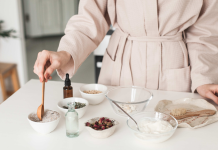Living in Arizona means we have the hottest summers! Sunscreen is extremely important for children of all ages! Protecting your child’s skin from too much exposure to the sun can greatly reduce the risk of skin cancer. It has been said over and over again that sunburn during childhood increases your child’s risk of developing skin cancer. Sunburn is a sign of skin damage that you can see, but invisible damage occurs too, in all skin types. There are two types of sun rays that are harmful to the skin: UVA rays and UVB rays. UVA rays cause skin aging and skin cancer, such as melanoma. UVB rays cause sunburns, cataracts, and also contribute to skin cancer. Below you will find what types of sunscreen to use, how to apply them, and other ways to protect your child’s skin.
The American Academy of Dermatology (AAD) recommends that all kids wear sunscreen. When purchasing sunscreen, it’s important to make sure it includes the words “broad spectrum,” which protects against UVA and UVB sun rays. Water-resistant sunscreens can no longer be labeled as “waterproof.” Sunscreens are now labeled as water-resistant for up to 40 to 80 minutes. Your sunscreen should have a Sun Protection Factor (SPF) of 30 or higher. Check the front label and the ingredient label on the sunscreen. The product you choose should also include one of these ingredients: titanium dioxide, zinc oxide, or avobenzone. These tend to be thicker but provide better protection for the skin.
Make sure to apply sunscreen to all exposed skin for at least 30 minutes before going outside. Reapply every 2 hours and after water exposure, such as swimming or sweating. Reapply the sunscreen when outdoors in both sunny and cloudy weather. Sun rays still come through the clouds and can still affect the skin. Check the expiration date of the sunscreen. If the sunscreen has changed in color or consistency, you should throw it away and get new sunscreen.
There are also other ways to protect your child’s skin. Your child can wear hats, sunglasses, and other sun-protective clothing. Additionally, your child can stay in the shade. Avoid being outside between 10 a.m. and 2 p.m. when the sun’s rays are the strongest. Get Vitamin D safely through a healthy diet. Ask your doctor if you have questions about healthy sources of Vitamin D. Check your child’s skin regularly. Look carefully all over the skin for new moles or changes in the skin. Talk to your child’s doctor about any changes you see.
Keeping your child’s skin safe is important as we near the high temps!












